How Much Should Your Startup Invest in Branding?
by Kunal Bhardwaj
12 Min Read
Published On : 7th July, 2024

- Introduction
- Subtopic-1
- Subtopic-2
- Subtopic-3
- Subtopic-3
- Conclusion
It might be an exaggeration, but, when startups think of investing in branding, the first thing that they usually do is develop a false notion about the concept of branding. The thing is, branding is more than just a sleek logo or a catchy tagline. It serves as the first impression you make and the lasting image you leave in your consumers’ mind. With the constantly increasing competition in the startup space, a strong brand can set your startup apart and significantly impact your return on investment (ROI). Through this article we will try to simplify how much your startup should invest in branding to maximize ROI, based on the stage, budget constraints and needs of your startup. Lets dive in.
Key Takeaways
- Branding is vital for creating a lasting impression, setting a startup apart in a competitive market. It includes visual identity (logos, typography, color schemes, imagery) and verbal identity (voice, tone, language, purpose). A cohesive brand strategy, compelling brand story, and consistent message are essential, along with collaterals like websites and social media profiles.
- Assess branding needs through a brand audit, understanding the target audience with research and buyer personas. Set clear, measurable branding goals (SMART goals) for effective strategies.
- Allocate 10-15% of the marketing budget to branding. Refine this based on the startup's stage, needs, budget, and industry. Pre-seed startups might spend $1,000-$10,000, while growth-stage startups may allocate $150,000-$250,000+.
- Tailor branding strategies to industry needs, such as medical content for healthcare or influencer marketing for fashion. Calculate ROI by tracking brand awareness, customer engagement, sales growth, and market share, using tools like Google Analytics and Hootsuite.
- Maximize ROI with professional branding services (agencies or freelancers) and digital marketing (social media, content marketing, SEO/SEM). Build a strong brand community and ensure consistency across all touchpoints.
- In conclusion, strategic branding investment drives long-term success. Use a comprehensive branding budget spreadsheet to manage expenses effectively and optimize ROI.
Introduction
We here at Contagia, get frequently asked the question that, "How much should we as a startup invest in branding, or is now the ideal time to make this investment?", and since there’s no straightforward answer to this topic, it can be frustrating for answer seekers. But today, we are sharing our learnings and experiences to provide you all with clear answers.
Usually startups assume that branding is just meant for shaping consumer’s perception about the brand. But, thats not the only use case. When done right, it demonstrates to consumers that you’re committed to them and their communities. It makes the people you serve feel seen, supported, and like they belong with you. This helps in developing loyalty, driving purchasing decisions and creating long-term relationships. Now, with the value of branding established, lets move forward to the part for which you are here.
Key Components of Branding
You can choose to skip this part if you are aware of the components, and directly jump to the branding need assessment section or budget allocation section.
Visual Identity System
The visual identity system includes your logo, typography, color scheme, imagery and other supporting visual elements. These components are used in a combined way and helps in creating a cohesive and recognizable image for your startup. These are the first thing your consumers encounter while coming across your brand.
Verbal Identity System
So, what’s a verbal identity of a brand? As the name suggests, it comprises of the components that suggest of how the brand talks to their consumer, just like a person talking to other. This system encompasses the following:
- Brand Voice
- Brand Tone
- Additional VI Systems: Apart from the above there are several factors that add to the verbal identity of your brand. They are brand language, purpose, audience, cadence etc.
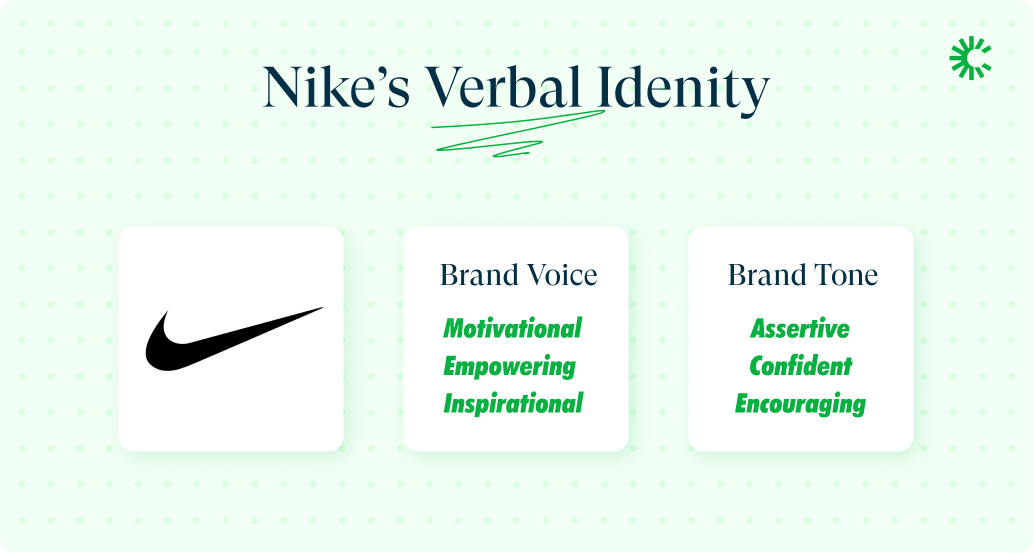
Brand Strategy
It won’t be exaggeration if we say that the most important component of branding is developing a brand strategy. A perfect cohesive combination of its component can make your startup stand out so much so that it might get titled for being a trendsetter for your industry. We will be discussing thoroughly in some other blog, but for now lets cover the key components very briefly here:
- Brand Story
- Brand Positioning
- Brand Message
Branding Collaterals
In the marketing and advertising space, branding collaterals and marketing collaterals are used interchangeably often times. These are the primary fronts through which your visual and verbal identity is fed directly to the consumers.
- Website
- Brand Guide
- Business Cards
- Signage
- Merchandise
- Other collaterals: There are several other collaterals that are a part of brand collaterals, these include brochures, social media profiles, and any other materials that represent your brand.
Additional components
Branding is not limited to just above mentioned components, rather they spread through all the parts of marketing where these is a need of visual, experiential or verbal mode of communication. Few of these modes are:
- Advertising and Promotion
- Social Media and Content Marketing
- Public Relations
- Brand Monitoring and Analytics
Assessing Your Branding Needs
Evaluating Your Current Brand Status
Start by assessing your current brand identity. Ask yourself the following questions:
- Is your branding consistent across all platforms?
- Does your visual identity reflect your brand values?
- Are your brand story and messaging clear and compelling?
- How do customers perceive your brand?
Conducting a brand audit can help identify areas for improvement and opportunities to strengthen your branding.
Determining your branding budget
Following the “so-called” Thumb Rule
Everyone in the startup journey starts from somewhere, and its always convenient if they have some point of reference to take idea from. One should also use their current financial outlook to make a responsible decision about when and how to spend money on branding. With that being said, we would start by sharing an old industry tagged, crude way of determining your branding budget allocation based upon your startup investment, revenue, raised capital or primary source of the monetary support. Let’s have a look at it first, post that we will refine the allocation process further.
It is said that one should allocate 10-15% of their marketing budget on branding aspects and initiatives.
For example,
Your company’s annual revenue: $1,000,000
Marketing budget allocation: 20-30% Revenue = $250,000
Branding budget Allocation: 10-15% Mkt Budget = $30,000
Contagia’s Refined Branding Budget Allocation
The above allocation can work crudely for ongoing branding expenses. But what about those startups that are planning to invest in branding for the first time? Well, for your utmost convenience, we have come up with a comprehensive allocation method, which is based up on our past branding & marketing experience and reading through several articles and statistics. We have divided these allocations predicated up on four bases:
- Based upon the Stage of the Startup
- Based upon the needs of the Startup
- Based upon the budget of the Startup
- Based upon the industry of the Startup
Based Upon the Stage of the Startup
When you're just starting out, you probably need a basic logo and a simple website. That's your idea/pre-seed stage, and you won't need to break the bank—think $1,000 to $10,000. If you’re in the seed stage, you’ll need a more polished brand identity and some social media presence. Moving to Series A? Now you’re talking advanced stuff like full-scale content and serious advertising. Once you're in growth or established stages, it's time for a branding overhaul and global campaigns. It's all about showing the world you mean business.
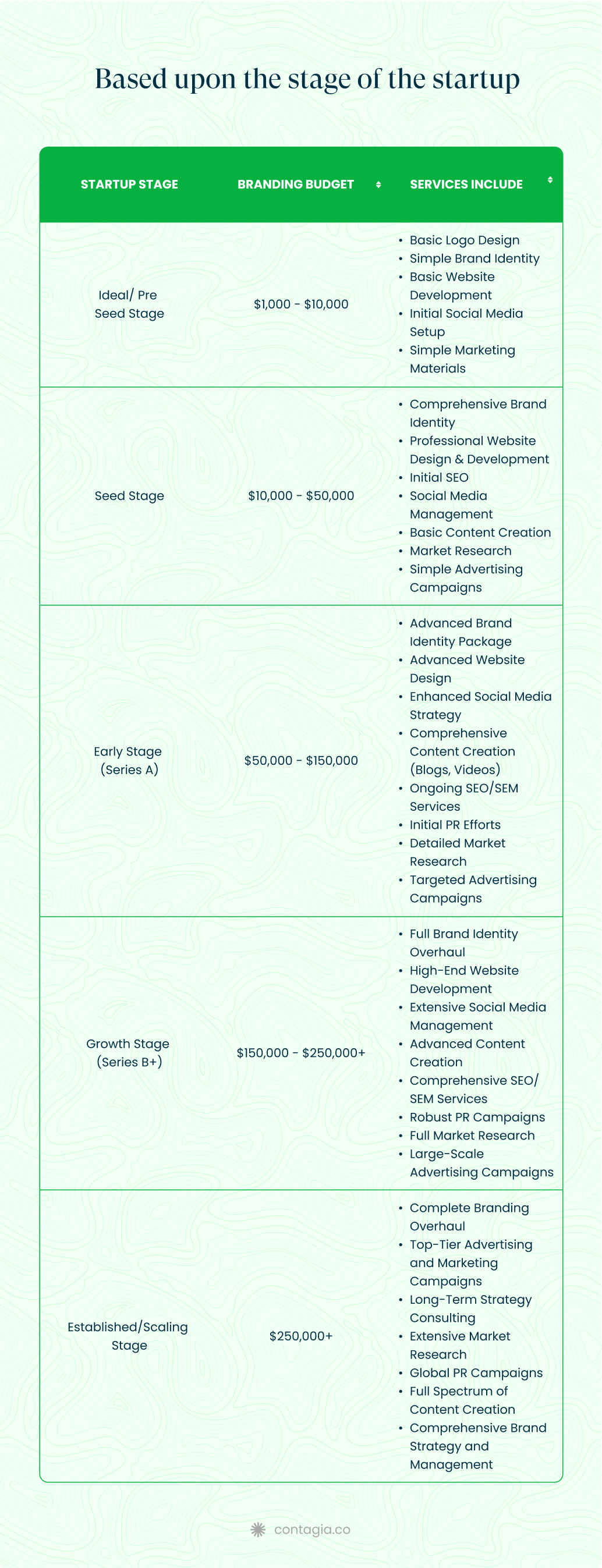
Based Upon the Needs of the Startup
So, what does your startup really need? E-commerce startups might go heavy on websites and social media. Tech companies? They’ll focus on app optimization and tech PR. With limited funds, freelancers can be lifesavers. Got a bigger budget? Top agencies can provide that killer brand strategy. Different needs, different plans. It’s like choosing between a DIY project and hiring a pro. Sometimes you just need a little help, and sometimes you want the full-service treatment.
Below is the table with proper attributes to narrow down the idea:
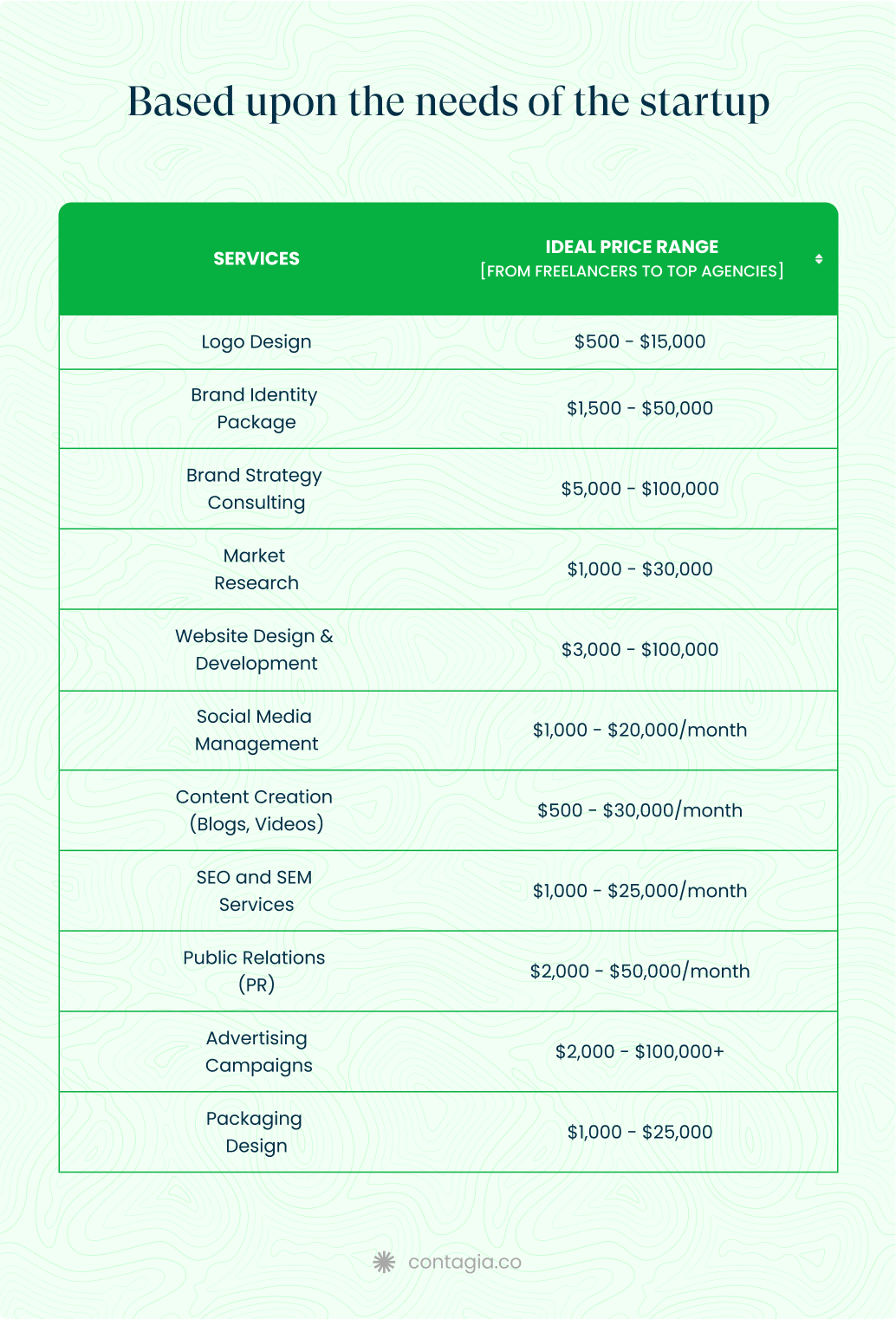
Based Upon the Budget of the Startup
This part might be the most read section of the blog, as human psychology tends towards knowing how much you can get out of a certain price you pay. Even though it serves the same value to you like all other bases, it still will feel more satisfying to read.
So here we go... If you've got less than $10,000, you'll stick to essentials like logos and basic websites. Conversely, if you're swimming in cash, say over $250,000, you might want to go all out? Complete brand makeovers, top-notch marketing—everything! We break it down into visual, verbal, strategy, and more so you can see exactly what you get for your money. It’s all about making smart choices.
Here’s a more concise table for you:

Based Upon the Industry of the Startup
Different industries, different rules. Healthcare startups need medical content and PR, while fashion brands might focus on influencer marketing. Tailored strategies work best. If you know your industry inside out, you’ll spend wisely. What works for a tech startup might flop for a restaurant. It’s like wearing a suit to a beach party—awkward and out of place! We help you figure out what your industry needs so your brand shines where it matters most. Why waste money on stuff that won't work, right?
Below is another table for you to download, for your budget allocation ideation:
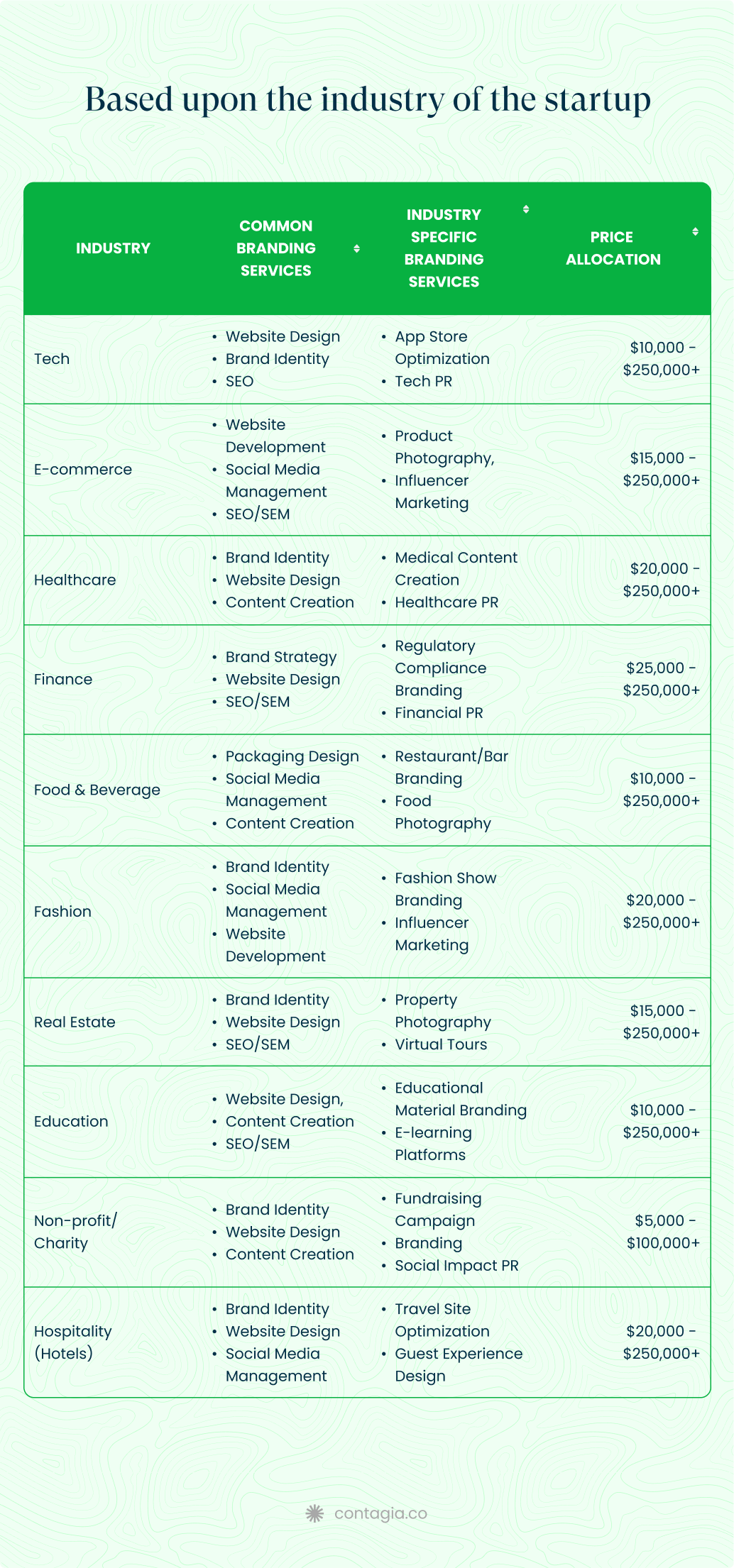
Calculating ROI on Branding Investment
Defining ROI in the Context of Branding
Whenever one hears the term ROI, they immediately relate it with direct monetary gains, and there is nothing wrong about it. But, ROI in branding is not just about immediate financial returns. It encompasses various aspects such as brand awareness, customer loyalty, market positioning, and others.
So, in order to calculate ROI on branding, you need to consider both quantitative and qualitative metrics.
Metrics to measure branding ROI
- Brand Awareness and Recognition: Track metrics such as social media followers, website traffic, and mentions in the media.
- Customer Engagement and Loyalty: Measure customer retention rates, repeat purchase rates, and customer satisfaction scores.
- Sales and Revenue Growth: Analyze sales data to determine if branding efforts have led to increased revenue.
- Market Share and Competitive Advantage: Assess your market position relative to competitors and track changes over time.
Key Tools & Methods for Tracking Branding ROI
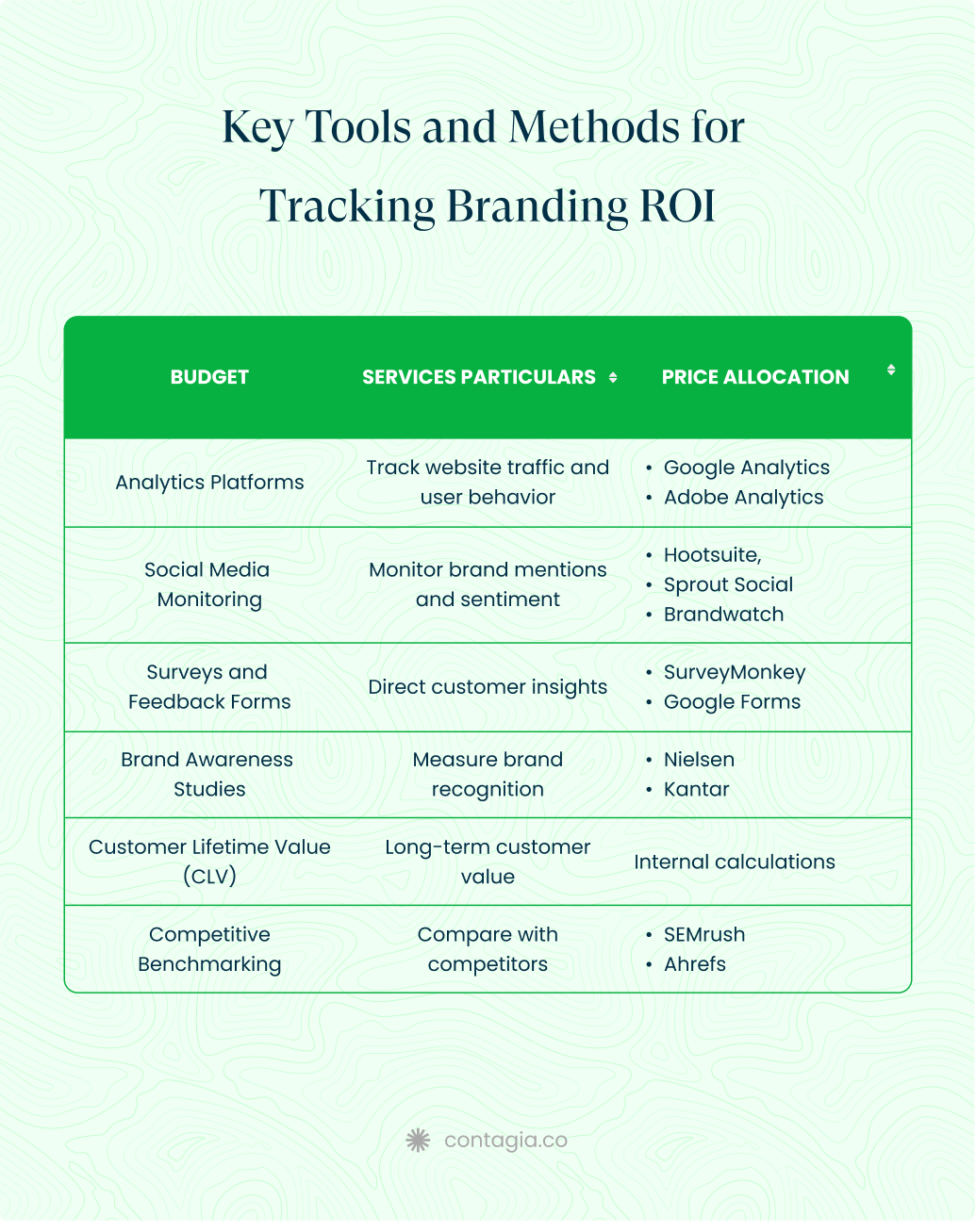
- Analytics Platforms: First off, you need some solid analytics platforms. Tools like Google Analytics and Adobe Analytics can show you how users interact with your brand online. They give you data on website traffic, user behavior, and conversions. Plus, these tools often have features that let you track specific branding campaigns. Imagine knowing exactly which part of your website draws the most attention—sounds great, right?
- Social Media Monitoring: Also, don't forget social media monitoring tools. Tools like Hootsuite, Sprout Social, or Brandwatch help you see what people are saying about your brand on platforms like Twitter, Facebook, and Instagram. You can track mentions, sentiment, and engagement rates. It’s like having an ear to the ground in the world of social media.
- Surveys and Feedback Forms: Talking of customer feedback, have you considered using surveys and feedback forms? Simple tools like SurveyMonkey or Google Forms can give you direct insights from your customers. Ask them how they feel about your brand. Their responses can be gold in understanding your brand perception.
- Brand Awareness Studies: These involve measuring how well people recognize your brand. You can do this through surveys or by checking the volume of branded searches online. Nielsen and Kantar offer such services and can help you understand where your brand stands in the market.
- Customer Lifetime Value (CLV): CLV helps you understand the total value a customer brings over their entire relationship with your brand. It’s not just about the initial sale but the long-term loyalty.
- Competitive Benchmarking: Competitive benchmarking helps you see how your brand stacks up against others in your industry. Tools like SEMrush and Ahrefs can provide insights into your competitors’ brand performance.
Strategies for Maximizing ROI on Branding Investment
Investing in Professional Branding Services
Hiring professional branding services can provide significant value. Consider the following options:
- Branding Agencies: Full-service agencies can handle all aspects of your branding, from strategy to execution.
- Freelance Designers and Marketers: Freelancers offer flexibility and can be more cost-effective for specific tasks like logo design or content creation.
Leveraging Digital Marketing for Branding
Digital marketing is a powerful tool for enhancing your brand presence:
- Social Media: Build an active and engaging presence on platforms where your target audience spends time.
- Content Marketing: Create valuable content that resonates with your audience and reinforces your brand message.
- SEO and SEM: Optimize your website and content for search engines to increase visibility and drive traffic.
Leveraging Digital Marketing for Branding
Digital marketing is a powerful tool for enhancing your brand presence:
- Social Media: Build an active and engaging presence on platforms where your target audience spends time.
- Content Marketing: Create valuable content that resonates with your audience and reinforces your brand message.
- SEO and SEM: Optimize your website and content for search engines to increase visibility and drive traffic.
Building a Strong Brand Community
Engage with your audience and build a loyal community around your brand. Encourage user-generated content, host events, and foster a sense of belonging. A strong community can amplify your brand message and drive organic growth.
Consistency in Branding Across All Touchpoints
Ensure your branding is consistent across all customer touchpoints, from your website and social media to packaging and customer service. Consistency reinforces your brand identity and builds trust with your audience.
Conclusion
Investing in branding is not just an expense—it's a strategic move that can yield substantial returns for your business. By understanding the various components of branding costs and aligning your investment with your business goals, you can build a strong, recognizable brand that drives long-term success.
To help you plan and manage your branding expenses effectively, we've created a comprehensive branding budget spreadsheet. This template includes categories for all major branding components and allows you to customize your budget based on your specific needs and goals. Use the insights and tools provided in this guide to create an effective branding strategy and maximize your ROI.